The Very Hungry Caterpillar: A critical analysis
On relatability and metamorphosis – analysing a classic text

Teaching critical thought
When I was a high school English teacher, it was part of the curriculum to teach kids essays. The intent was for kids to be able to document their critical analysis; to acquire the ability to pick apart a book, movie or any other “text”, to recognise techniques and themes, and to consider what the author actually meant.
I always thought it was a shame that so often the skills of critical analysis and essay writing were so tightly intertwined. An essay has value (I now spend a fair bit of time writing them for real), but it’s a cumbersome tool with which to start prising ideas from teenagers. The dense, highly structured conventions, the formulas, the acronyms, the walls of sentences – I felt like all this got in the way of the basic expression of ideas.
We spent much of our time studying novels, short stories or movies. If I was to do it all again, I think I’d focus more on critiquing the news, political speeches and leaflets, random rants on the internet; we did do some of this kind of work, but not enough. Rather than perfecting the essay, I’d prefer for my students to understand a valid source from a rubbish one; to be logical when appraising both sides of any given debate; to sift through rhetoric and fluff and get to the truth of the matter; to be able to call bullshit.
It would also bother me that our critical speculations weren’t entirely confirmable. We could only guess at what Shakespeare meant in Macbeth. It’s not like we could just ask him. I might have been the only English teacher who didn’t enjoy the prospect of a Shakespeare unit. My lack of enthusiasm may have been contagious.
Once, I blanked out the byline of a magazine piece I’d written myself, and handed it around for the students to pick apart and spot different literary techniques. Some of the students had already seen it in the weekend paper and probably wondered if I was just showing off, but it was interesting to hear some of the questions that did actually come up, prompting me to think: What did I actually mean there? Was I even in control of it?
We teachers were always seeking material that our students would find relatable; that they’d want to read and talk about. I would wonder: What might be the ultimate relatable piece of writing? One that everyone would surely know? The other teachers and I joked about doing a critical analysis of Eric Carle’s brilliant and popular book The Very Hungry Caterpillar . We never followed through on it though. Until now.
Before we dive in, a few answers to some inevitable questions:
- “Isn’t it the job of the teacher to bridge that gap between ideas and the ability to communicate it clearly? To build these skills in their students?” Yes. Yes it is. These are merely my impressions, from early in my teaching career. (Full disclosure: there wasn’t really any “middle” or “late” stage in said career.)
- “Is this a serious analytical essay?” About as serious as a first or second year university student writing something at 4am for a 9am deadline, for a book they didn’t actually read.
- “You better not be making fun of Eric Carle.” No, just a bit of fun with a classic book. Eric Carle is a legend. Also, technically this is not actually a question.
- “If you’re a serious writer, how come you don’t get published in serious publications?” True, this hasn’t yet been picked up by the New Yorker , but it’s surely only a matter of time.
Hungry hungry: Metamorphosis and ascension
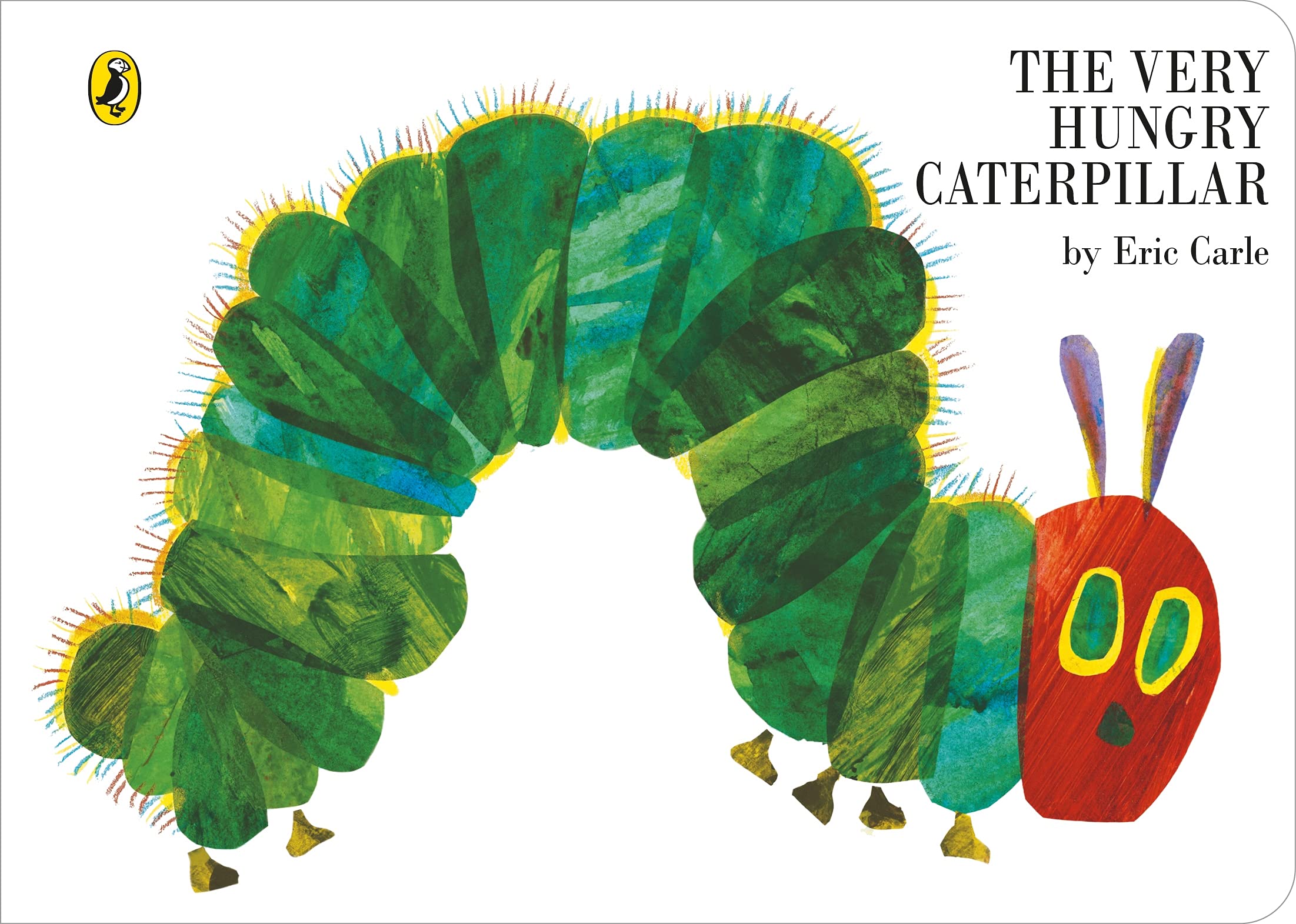
The Very Hungry Caterpillar is a grand quest for the ages, akin to Harry Potter searching for horcruxes, Frodo Baggins inching towards Mordor, or the gnarly old guy from Jaws looking for the killer shark. This little caterpillar is on a journey of transformation, with the ultimate outcome of personal metamorphosis. He passes through the artifice of the manufactured world, sampling the fruits and processed goods borne from capitalism, before returning to the simpler, more natural environment, where he experiences relief and catharsis: “The caterpillar ate through one nice green leaf, and after that he felt much better.” The pinnacle of his quest is his literal and figurative transformation into a more elevated being.
Setting and structure
The opening is relatively humble and understated: a little white egg, at night, illuminated by moonlight. Carle foreshadows the impact this caterpillar is going to have on his environment, and indeed wider society, with the addition of the onomatopoeic “pop!” as the sun rises. Certainly this adds drama, given that the hatching of a caterpillar from its egg would normally make no audible sound.
The movement of the caterpillar through different scenes is circular: we start in the natural environment, then proceed through a parade of processed goods, perhaps from a picnic, supermarket or pantry: chocolate cake, pickle, salami, watermelon, etc. It is not explained how the caterpillar discovered or negotiated a frozen ice cream cone (did he gain access to a freezer?), and made an exact hole through its centre without being trapped in a quagmire of sweet, melted dairy goods. Carle knows when to show and when to tell.
We then return to the leaf, now in the daytime. It’s telling that here our protagonist finds relief – it’s a coming-home moment of renewal. He concludes by enshrining himself in his small house (his “cocoon”) ready to be reborn.
Carle was originally inspired to create the book’s structure when toying with a hole punch. The pages have physical holes pierced through the foods the caterpillar has partially eaten; plus some of the pages are really just folds, not full pages, and vary in size. Initially it was difficult to find a printing outfit which would take on the novel structure, but eventually a Japanese company agreed to the challenge. The caterpillar negotiated his own challenges, as did the author and publisher – but a way was found. Industrialisation (and later, digitisation) has elevated us to great feats, but Carle and his caterpillar might ask: Is it for the better?
Carle originally intended for the protagonist to be a bookworm called Willi, but the editor thought a caterpillar would be more relatable. Carle agreed, in particular for the opportunity to include a butterfly in the narrative. This caterpillar is insatiable, driven, and not easily deterred by the magnitude of his task: to eat his way to what first looks like oblivion, but what transpires as redemptive transformation.
He does lose his way. He starts in the tree, but is then sucked in to what we can only imagine is the reckless frivolity of a picnic, or the wild excess of an overstocked pantry.
This transition challenges the moral fortitude of our protagonist. He must weigh the quandary of looting and stealing food to feed himself against the clear need for sustenance and survival. He chooses to indulge in the treasures he has pilfered, and feels worse off for it, both physically (“he had a stomach ache”) and emotionally, indicated by the relief he feels after coming out the other side of his food orgy. For this strength of character he is rewarded with metamorphosis into a more powerful being: a butterfly, capable of feats such as flying, far beyond the physical capabilities of the humble caterpillar – essentially a superhero or celestial entity by comparison. Carle emphasises the drama of this ascension with a colourful double-page illustration to conclude his masterwork.
One reading of this text is that it’s about class. Our caterpillar has a humble start, but via rich, processed foods, supported by the picnics and pantries of the wealthy, is thrust into a world of excess. You can see evidence of this in the way he just eats holes through vast repositories of rich food, rather than consuming it all, itself a comment on abject waste. This quickly feels uncomfortable to our protagonist; it’s only when he returns to his birthplace that he is able to understand there was never any need to compromise his core values.
Perhaps within this issue of class – or parallel to it – is the issue of childhood obesity. Our protagonist is quite literally unable to control himself around the rich foods he encounters, and eats himself into sickness. Ultimately he is able to reset his dietary course, recover from a depressing food stupor, and forge a more healthy path to adulthood, as well as a more streamlined form able not only to move more freely, but to fly.
The insertion of the cocoon at the end pits both religious and scientific thinking against one another. The caterpillar has closed himself within his cave, and we wait for him to arise and be born again. Yet Carle throws in the scientific exposition “He built a small house, called a cocoon”, asking young readers always to be more probing and analytical in their thinking. (Or his editor might have suggested he is more explicit about what he means by “small house”.)
Carle presents the world with a popular yet also nuanced and challenging text. The Very Hungry Caterpillar demands that we reconsider the relationship of the natural world with the machinations of human society. The caterpillar ate too much, and he felt sick – just as we risk becoming sick, overwhelmed or ostracised when we adopt overtly hedonistic or reckless philosophies. It’s notable that Carle has chosen a children’s book as the vehicle for such a powerful message, which itself implies that we should start forming and evaluating our position in society early – not wait for it to be formed for us, as we become adults and settle into a directional vector that we may or may not have actively selected for ourselves.
Touching base
Date not needed, you lost me there.
Skip to Main Content
- My Assessments
- My Curriculum Maps
- Communities
- Workshop Evaluation
Share Suggestion
The very hungry caterpillar lesson plan, lesson plan, grade levels, course, subject.
- Printer Friendly Version
Identify differences in the life cycles of plants and animals.
Common Core Standards
As of right now, the Common Core Standards objective numbers are written for grades 3 and up.
*With prompting and support, ask and answer
questions about key details in a text.
*Identify the front cover, back cover, and title
page of a book.
*Name the author and illustrator of a text and
define the role of each in presenting the ideas or
information in a text.
*Actively engage in group reading activities with
purpose and understanding.
*Use a combination of drawing, dictating, and
writing to compose opinion pieces in which they
tell a reader the topic or the name of the book
they are writing about and state an opinion or
preference about the topic or book (e.g., My
favorite book is . . . ).
*Confirm understanding of a text read aloud or
information presented orally or through other
media by asking and answering questions
about key details and requesting clarification if
something is not understood.
*Write numbers from 0 to 20. Represent a number of objects with a
written numeral 0-20 (with 0 representing a count of no objects).
*Count to answer “how many?” questions about as many as 20 things
arranged in a line, a rectangular array, or a circle, or as many as 10
things in a scattered configuration; given a number from 1–20, count
out that many objects.
*Identify whether the number of objects in one group is greater than,
less than, or equal to the number of objects in another group, e.g., by
using matching and counting strategies.1
*Solve addition and subtraction word problems, and add and subtract
within 10, e.g., by using objects or drawings to represent the problem.
Life cycle - the process of moving from one stage of life to another (egg-caterpillar (larva)-pupa-butterfly)
Cocoon - a shell formed around a moth larva for protection during the pupal stage
Chrysalis - a shell formed around a butterfly larva for protection during the pupal stage
Metamorphosis - a change of physical form such as a caterpillar to a butterfly
Egg- a protective hard shell from which a baby caterpillar hatches
Larva- a caterpillar that hatches from an egg
Pupa- the stage of a caterpillars life where it builds a protective covering (chrysalis/butterfly or cocoon/moth) around itself so that it can turn into an adult
Butterfly- an insect that flies around in the daytime with brightly colored wings and a hollow tongue for sucking nectar from plants
The teacher will:
1. Read the story, The Very Hungry Caterpillar by Eric Carle
a. after reading (can be later on in the day or next day as day 2 of story) lead discussion about
* which days had an even or an odd number of food,
*which day did he eat the most food, the least food
*if you added Monday and Tuesdays food together would it be greater than (more), less than (less) or equal to Wednesdays food? ***put different combinations together
b. if you decide to do the food pyramid chart, discuss the categories and which foods are good choices and which foods are once in a while choices. Have children come up to put lamintated cut outs of the food the caterpillar ate in the proper spots
2. Discuss/review the vocabulary words before, during and after the story
a. write words on board so children can notice spelling patterns and use vocab in writing
3. Use the poly vision board or poster to discuss and show pictures of the life cycle of a butterfly
4. Give the instructions and model how to complete the life cycle worksheet
5. Give the instructions and model how to complete the writing paper and illustration on which part of the story was the student's favorite part and why.
The students will:
1. Listen to the teacher read The Very Hungry Caterpillar by Eric Carle
2a. Tell which day had an even or an odd number of food, which day had the most and the least amount of food and add two days together and answer whether those days food totals are greater than, less than or equal to another day (laminated cut outs of the food can be used to solve addition problems and for students who need to manipulate items to see <, > and =)
2b. Place laminated cut outs of the food that the caterpillar ate in the proper spots on the food pyramid chart.
3. Join in the discussion of the vocabulary words (ask questions if need be, repeat word, make prediction of what word means)
4. Use the poly vision board to see pictures of the life cycle of a butterfly.
5. Complete the life cycle worksheet
6. Complete the writing and illustration paper on which part of the story and why was their favorite. (I liked it when the caterpillar ......./ The best part was .....)
7. Share their writing with the class if they would like to.
Lesson Essential Question(s)
Why do you think Eric Carle chose to write a book about a caterpillar?
Which day did the caterpillar eat the most food? (Saturday)
Which day did the caterpillar eat the least amount of food? (Monday)
Which amount of food is an even number? (2, 4)
Which amount of food is an odd number? (1, 3, 5)
Which foods that the caterpillar ate are good choices on the food pyramid? (apple, pear, plum, strawberries, oranges, cheese, pickle, sausage, salami, watermelon)
Which foods that the caterpillar ate are choices that we should only have every once in awhile? (lollipop, cupcake/cake, pie)
When we are making choices on what food we want to eat, why should you choose these choices (point to laminated "good choice foods") over these choices (point to laminated "once in a while foods")?
How many parts are there in a butterfly life cycle? (4)
What is it called when when a caterpillar moves from one stage of its life to another? (life cycle)
What are the four parts of the butterfly life cycle? (egg, larva, pupa, butterfly)
Which part comes first? (egg) Which part is last? (butterfly)
What is the protective covering around the caterpillar called? (chrysalis)
What is it called when a caterpillar turns into a butterfly? (metamorphosis)
Which part of the story was your favorite part? Why do you like that part?
One 30-40 minute session for reading, discussing life cycle and completing life cycle sheet.
One 20-30 minute session for writing and illustrating about favorite part.
One 20 minute session for math questions and/or enrichment chart.
The Very Hungry Caterpillar book by Eric Carle.
caterpillar puppet, a piece of fabric for the chrysalis, butterfly puppet and laminated pictures of what it eats
poly vision board and pen
dry erase markers (just in case poly vision board pen isn't working properly)
Butterfly life cycle poster
Life cycle worksheet and construction paper
pencil, crayons, scissors, glue
writing paper
Suggested Instructional Strategies
Instructional procedures.
The teacher will use the poly vision board to:
1. show a video of a butterfly life cycle
2. show pictures of each stage so the students can use the pen to label each stage
3. show pictures of different butterflies.
4. show a food pyramid that the students can interact with and decide in which section would each piece of food the caterpillar eats belong
Enrichment/extension:
1. After discussing the differences between a moth and a butterfly, the teacher will show pictures of each and the children will decide whether the picture is a moth or a butterfly.
2. After viewing different types of butterflies on the poly vision board, each child will pick the one they liked best, print the picture and attach it to their writing on why that butterfly is their favorite.
3. Create a class graph (which includes tally marks, numbers and words) to show which butterfly is the favorite.
4. Based on the food that the caterpillar eats in the story, create a food pyramid to show which food choices are healthy and which are not. (use laminated cut outs of food for children to place in proper spots on food pyramid)
Formative Assessment
Name: ______________
The Very Hungry Caterpillar by Eric Carle
1. Tell whether the food on any given day within the story is an even number or an odd number?
Even yes/no Odd yes/no
2. Add two days of food from the story together? Yes/No
3. Tell which number of food is greater than, less than or equal to another number of food?
Greater than Yes/No
Less than Yes/No
Equal to Yes/No
4. Put the pictures of a butterfly life cycle in sequential order? Yes/No
5. Match the words (egg, larva, pupa, butterfly) to the correct pictures in the butterfly life cycle?
Egg Yes/No
Larva Yes/No
Pupa Yes/No
Butterfly Yes/No
6. Write and illustrate a sentence (or two) about the part of the story that they liked best? Yes/No
***Questions 1,2 and 3 can be assessed either one on one or using individual white boards or chalkboards in a whole group setting.
***Questions 4, 5 and 6 can be assessed with the student's work.
Related Materials & Resources
Other resources I could use with this lesson are:
1. Eric Carle library (The Very Grouchy Ladybug, The Very Quiet Cricket, etc...)
2. Interview with Eric Carle on Reading Rockets Intervention site: http://www.readingrockets.org/books/interviews/carle/

Date Published
The Very Hungry Caterpillar. A Complete Lesson Plan.

Description
Questions & answers, sandra halajian.
- We're hiring
- Help & FAQ
- Privacy policy
- Student privacy
- Terms of service
- Tell us what you think

Reading Comprehension Questions for The Very Hungry Caterpillar
- April 30, 2010
- Language , Materials , Other Themes , Picnic , Questions , Reading , Seasons , Spring , Summer , Themes , Worksheets
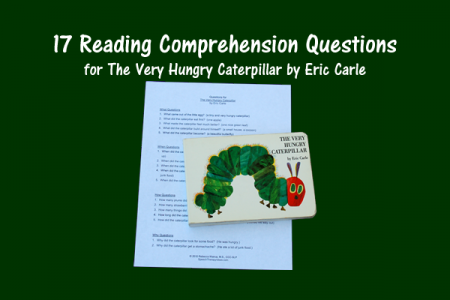
Vocalic “R” – Basic Set
This basic set includes: Ideas and instructions for the enclosed materials Picture cards for medial…
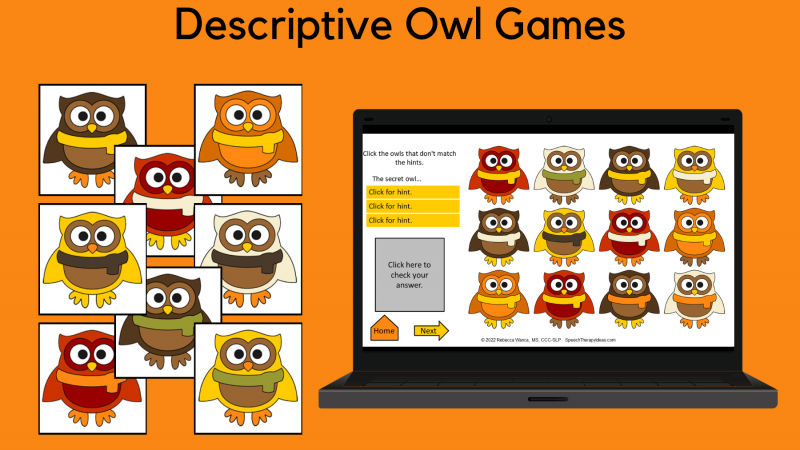
Descriptive Owl Games
Your students can be as wise as owls during these games! These colorful owls are…
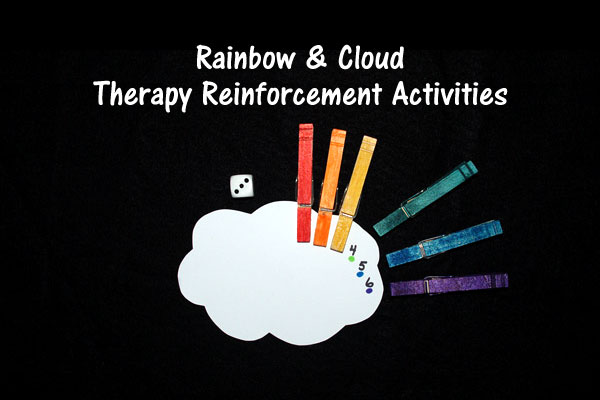
Rainbow and Cloud Therapy Reinforcement Activities
Using just a few basic materials, you can do two different rainbow clothespin reinforcement activities…
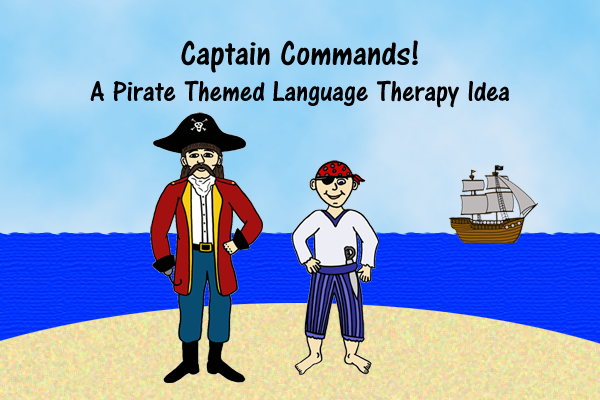
Captain Commands – A Pirate Themed Game
Here's an idea for following directions that gets your students up and moving...with a pirate…
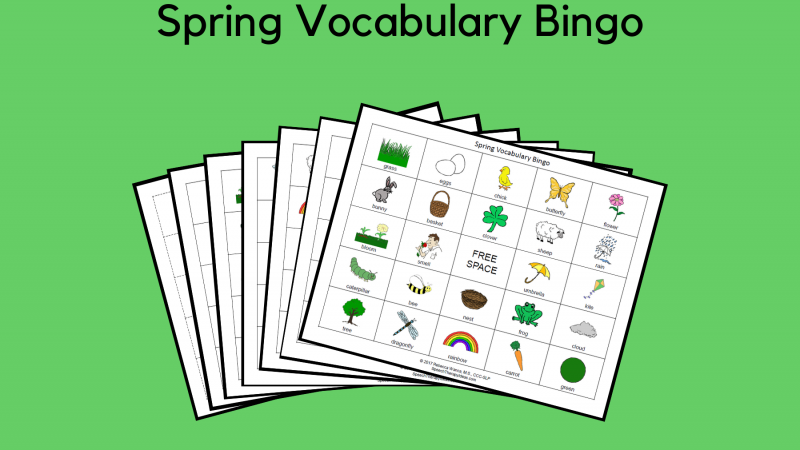
Spring Vocabulary Bingo
It's "Springo" time! Add some variety to your spring vocabulary lessons with these spring bingo…
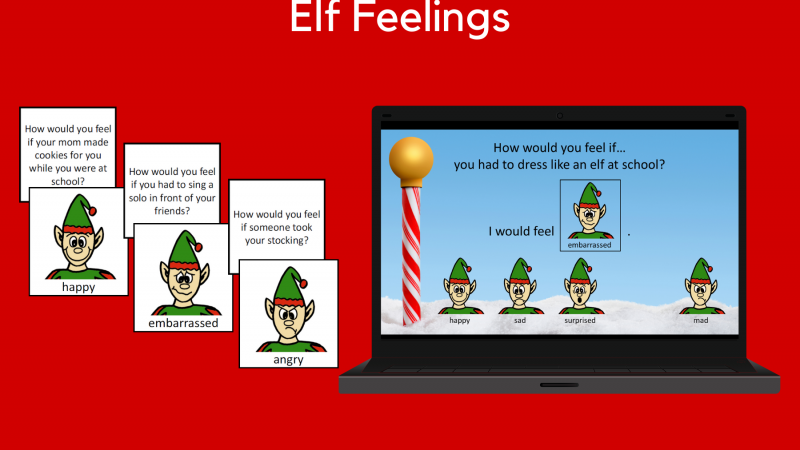
Elf Feelings
Use these elves to help your students answer Christmas-themed "How would you feel if..." questions. …
- previous post: Picnic Theme – Basic Set
- next post: Irregular Past Tense Verbs – Picnic Theme

IMAGES
VIDEO
COMMENTS
The Very Hungry Caterpillar by Eric Carle What Questions 1. What came out of the little egg? (a tiny and very hungry caterpillar) 2. What did the caterpillar eat first? (one apple) 3. What made the caterpillar feel much better? (one nice green leaf) 4. What did the caterpillar build around himself? (a small house, a cocoon) 5. What did the ...
Plot. The Very Hungry Caterpillar is a grand quest for the ages, akin to Harry Potter searching for horcruxes, Frodo Baggins inching towards Mordor, or the gnarly old guy from Jaws looking for the killer shark. This little caterpillar is on a journey of transformation, with the ultimate outcome of personal metamorphosis.
Ingeniously die-cut pages show what the caterpillar ate each day until he wraps himself in a cocoon and then awakens as a beautiful butterfly. The Very Hungry Caterpillar depicts one of nature’s most frequent yet spectacular marvels, the metamorphosis of a butterfly, in a picture book sure to delight the youngest of readers. Bloom’s Questions:
• Create a Very Hungry Caterpillar out of junk e.g. egg box body • Explore paint to print the caterpillar, fruit and butterflies – see photos on the blog! • Use pasta tubes to create a caterpillar by threading onto a pipe cleaner – great for finger dexterity! • If you have a large Tuff Tray then why not create a large butterfly using
Four. What did that caterpillar eat on Friday? Oranges. How many oranges did he eat? Five. How many different foods did the caterpillar eat on Saturday? Chocolate Cake, Ice Cream Cone, Pickle, Swiss Cheese, Salami, Lollipop, Cherry Pie, Sausage, Cupcake, and Watermelon. Ten. Why do you think he had a stomachache?
Open Ended Questions: Before Reading: • What do you think this book is about? • What animals do you see on the cover? • What colors do you see? During Reading: • What time of day is it? • What popped out of the egg? • What fruit do you see? • What do you think the caterpillar will do next? • Caterpillars are _____?
materials for the arts ELA: The Very Hungry Caterpillar Teacher: Lauren Yannucci . The Very Hungry Caterpillar by Eric Carle . Subject Area: ELA (speech and language skills, pragmatic skill) Common Core Standards (ELA): • CCSS.ELA-Literacy.RL.K.1 • With prompting and support, ask and answer questions about key
2b. Place laminated cut outs of the food that the caterpillar ate in the proper spots on the food pyramid chart. 3. Join in the discussion of the vocabulary words (ask questions if need be, repeat word, make prediction of what word means) 4. Use the poly vision board to see pictures of the life cycle of a butterfly. 5.
A complete lesson plan that includes critical thinking questions you can ask students before, while, and after reading the book. It also helps students develop their vocabulary. It comes with two easy and fun activities with printable worksheets for students.
After reading Eric Carle’s The Very Hungry Caterpillar, you can go through these questions with your students to work on answering “what”, “when”, “how”, and “why” questions and to check for comprehension of the story. The page includes 17 questions and their answers. It can also be found as part of the Picnic Theme Basic Set.